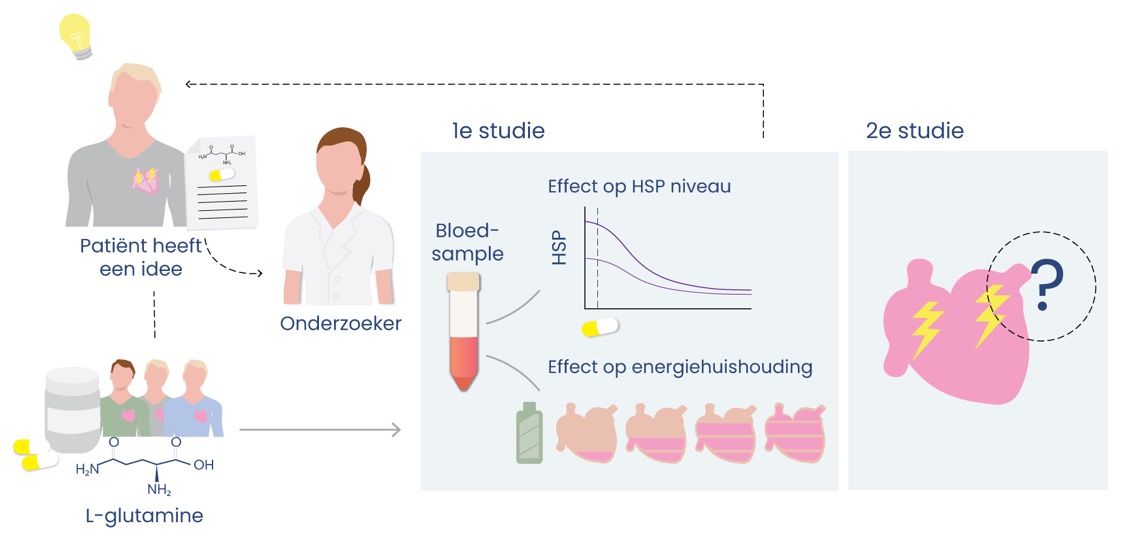Complaints After Ablation? This is The Explanation!
In several patients with atrial fibrillation (AFib), complaints return after ablation. This can be very frustrating and for a long time, this could not be explained well. For this reason, the AFIP Foundation conducted research in 2016 into the recurrence of atrial fibrillation after undergoing ablation therapy.
The research has shown that the atrium of patients with persistent AFib activates electrical signals in different places. This means that the electrical signals are not only located in the pulmonary veins.
Furthermore, the electrical patterns are very chaotic and therefore it is difficult for the doctor to determine where to ablate. There is therefore a chance that not every point where electrical signals are generated will be ablated.
As a result, atrial fibrillation may return.
What is a catheter ablation?
Irregular heartbeats are a characteristic of AFib. These sometimes originate in the pulmonary veins. The irregular heartbeats occur because the electrical waves in the atrium take on a chaotic pattern. These waves can be activated in multiple places in the atrium. The goal of catheter ablation is to block the irregular electrical waves that originate from the pulmonary veins.
During the treatment, the doctor burns away atrial tissue around the pulmonary veins. The atrial tissue then turns into scar tissue and blocks the path of the electrical signals. This isolates the cells that cause extra beats from the atria and AFib can no longer occur.
However, after this treatment atrial fibrillation can still return, because the destroyed heart muscle cells start to recover, as a result, new scars must be created to block the path of electrical signals. In addition, in some patients, AFib continues to return, despite the fact that the pulmonary veins are completely isolated.
Why does AFib return after catheter ablation?
In 2016, the research team of the AFIP Foundation found an answer to this. For example, the team investigated the electrical activation on the inside and outside of the right atrium wall during open-heart surgery in patients:
- without atrial fibrillation
- with short-term atrial fibrillation
- with paroxysmal atrial fibrillation
- with long-term atrial fibrillation
The AFIP foundation used a clamp with electrodes with 128 measuring points each. We placed these electrodes in the right atrium and on the inside and outside of the heart.
Electrical signals in patients without atrial fibrillation
In the video below you will find an example of a healthy heart. In this heart, the electrical signals are activated simultaneously on the inside and outside of the atrium wall. As you can see, the electrical waves take on a uniform pattern.
Electrical activation of the heart of a patient with atrial fibrillation
In the video below you will find an example of a series of heartbeats during atrial fibrillation of a patient, where the inside (right) and outside (left) of the heart wall are electrically decoupled. At a glance, you can see that the waves in both layers activate the heart muscle tissue at different times and in different directions.
The patterns are very chaotic.
The study shows that when AFib has been present for a longer period of time, the electrical signals are no longer smooth and do not only originate from the pulmonary veins.
In addition, chaotic activation occurs in both atria, with electrical waves crossing from the inside to the outside of the heart and vice versa.
This electrical decoupling makes the arrhythmia stable and this explains why AFib is very difficult to treat. Where should the doctor ablate when there are so many electrical waves?
With this research, we have demonstrated a completely new mechanism for the persistence of atrial fibrillation. This finding is important because it explains for the first time why ablation therapy is not successful in some patients.
In May 2017, a new international guideline for atrial fibrillation was published, which included these results.
Do you know someone who might be interested in this?






